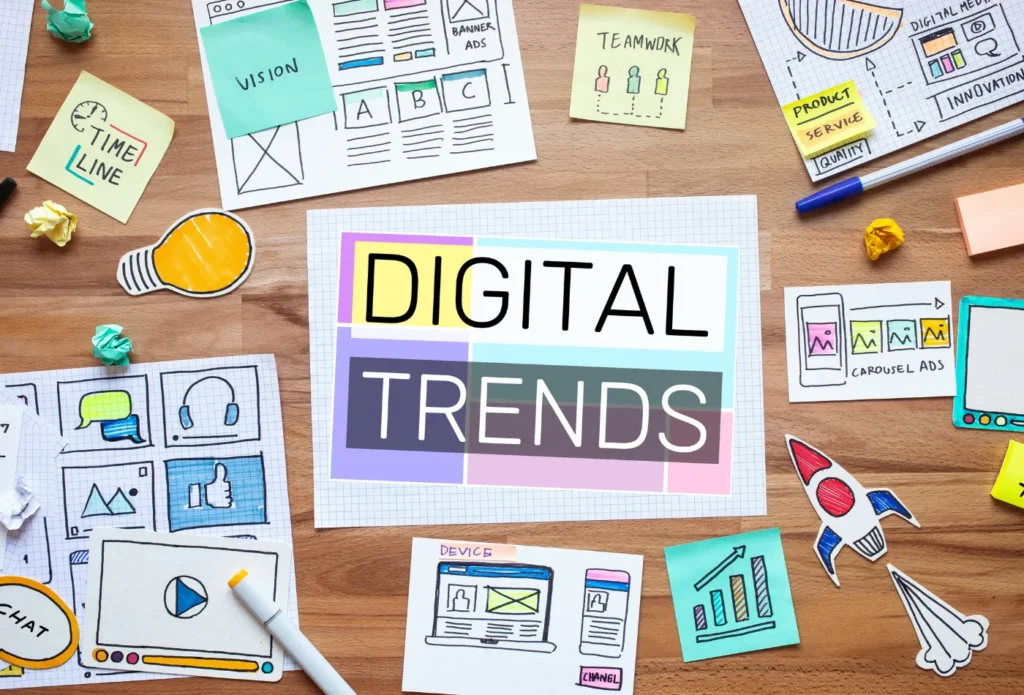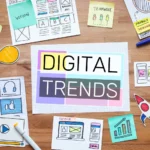The digital landscape is constantly evolving, and staying ahead of the curve is crucial for success in online business. As we move into 2024, several key trends are shaping the digital marketplace. Understanding these trends can help entrepreneurs, investors, and business owners navigate the competitive online environment and seize new opportunities. Here, we explore the top trends in online business for 2024 and how they are transforming the digital marketplace.
1. Artificial Intelligence and Machine Learning Integration
Overview:
Artificial Intelligence (AI) and Machine Learning (ML) are no longer just buzzwords; they are integral to the future of online business. AI and ML technologies are being used to enhance customer experiences, optimize operations, and drive decision-making processes.
Applications:
- Personalized Customer Experiences: AI-driven recommendation engines provide personalized product suggestions, improving customer satisfaction and boosting sales.
- Chatbots and Virtual Assistants: Automated customer service tools powered by AI can handle inquiries 24/7, offering instant support and reducing operational costs.
- Predictive Analytics: Businesses can use ML algorithms to predict market trends, customer behavior, and inventory needs, enabling more informed decision-making.
Impact:
The integration of AI and ML is making businesses more efficient, responsive, and customer-centric. Companies that leverage these technologies can gain a significant competitive edge.
2. The Rise of Niche Marketplaces
Overview:
Niche marketplaces are specialized platforms that cater to specific industries or customer segments. Unlike general marketplaces like Amazon or eBay, niche marketplaces focus on particular products or services, attracting a targeted audience.
Examples:
- Etsy: A marketplace for handmade, vintage, and unique goods.
- Reverb: A marketplace for musical instruments and gear.
- StockX: A marketplace for sneakers and streetwear.
Impact:
Niche marketplaces offer a more personalized shopping experience and can foster a strong sense of community among buyers and sellers. Businesses operating in niche markets can benefit from less competition and higher customer loyalty.
3. Sustainable and Ethical Business Practices
Overview:
Sustainability and ethics are becoming increasingly important to consumers. Businesses that prioritize environmentally friendly practices and ethical sourcing are gaining favor with conscious consumers.
Applications:
- Eco-friendly Products: Offering products made from sustainable materials or using eco-friendly packaging.
- Ethical Sourcing: Ensuring fair labor practices and sourcing materials from suppliers who adhere to ethical standards.
- Carbon Footprint Reduction: Implementing strategies to reduce carbon emissions and promote sustainability.
Impact:
Companies that embrace sustainability and ethical practices not only contribute to a better world but also attract a growing segment of environmentally conscious consumers. This can lead to increased brand loyalty and positive brand perception.
4. The Growth of Subscription-Based Models
Overview:
Subscription-based business models are becoming more popular across various industries. These models provide businesses with a steady stream of recurring revenue and offer customers convenience and value.
Examples:
- Streaming Services: Netflix, Spotify, and other streaming platforms.
- Subscription Boxes: Monthly delivery of curated products, such as beauty products (Birchbox) or snacks (Graze).
- Software as a Service (SaaS): Subscription-based access to software applications like Adobe Creative Cloud or Microsoft Office 365.
Impact:
Subscription models create a predictable revenue stream and foster long-term customer relationships. Businesses can benefit from increased customer retention and lifetime value.
5. E-commerce Expansion into New Markets
Overview:
E-commerce is expanding beyond traditional markets and entering new regions and industries. The growth of internet connectivity and mobile device usage is driving e-commerce adoption in emerging markets.
Applications:
- Cross-border E-commerce: Businesses are reaching international customers through online platforms.
- Mobile Commerce (M-commerce): The rise of mobile shopping apps and mobile-friendly websites.
- Social Commerce: Selling products directly through social media platforms like Instagram and Facebook.
Impact:
Expanding into new markets opens up opportunities for revenue growth and diversification. Businesses can tap into new customer bases and reduce reliance on saturated markets.
6. The Power of Influencer Marketing
Overview:
Influencer marketing leverages the reach and credibility of social media influencers to promote products and services. This strategy can significantly boost brand awareness and credibility.
Applications:
- Sponsored Content: Collaborating with influencers to create content that promotes products or services.
- Affiliate Marketing: Influencers earn a commission for driving sales through unique affiliate links.
- Product Reviews and Unboxings: Influencers share their experiences with products, providing authentic reviews.
Impact:
Influencer marketing can drive significant traffic and sales, especially among younger demographics who trust influencer recommendations. It also helps businesses build a stronger social media presence.
7. Enhanced Cybersecurity Measures
Overview:
As cyber threats become more sophisticated, businesses are prioritizing cybersecurity to protect sensitive data and maintain customer trust. Enhanced cybersecurity measures are critical for safeguarding online transactions and personal information.
Applications:
- Multi-factor Authentication (MFA): Adding extra layers of security beyond passwords.
- Encryption: Ensuring that data transmitted online is encrypted and secure.
- Regular Security Audits: Conducting audits to identify and address vulnerabilities.
Impact:
Investing in cybersecurity helps prevent data breaches and cyber-attacks, protecting both the business and its customers. Strong security measures also enhance customer confidence in online transactions.
8. The Emergence of Augmented Reality (AR) and Virtual Reality (VR)
Overview:
AR and VR technologies are creating immersive shopping experiences and transforming how consumers interact with products online.
Applications:
- Virtual Try-Ons: Allowing customers to virtually try on clothing, accessories, or makeup.
- Virtual Showrooms: Creating immersive, 3D shopping environments.
- Interactive Product Demos: Using AR to provide detailed product demonstrations.
Impact:
AR and VR can significantly enhance the online shopping experience, making it more interactive and engaging. These technologies can also reduce return rates by helping customers make more informed purchasing decisions.
9. The Dominance of Mobile Commerce
Overview:
Mobile commerce, or m-commerce, is continuing to grow as consumers increasingly use smartphones for shopping. Optimizing for mobile is essential for capturing this market.
Applications:
- Mobile Apps: Developing dedicated shopping apps for a seamless mobile experience.
- Responsive Design: Ensuring websites are mobile-friendly and easy to navigate on small screens.
- Mobile Payment Options: Offering payment methods like Apple Pay, Google Wallet, and other mobile payment solutions.
Impact:
Optimizing for mobile commerce can lead to higher conversion rates and improved customer satisfaction. Businesses that prioritize m-commerce are better positioned to capture the growing number of mobile shoppers.
10. Blockchain Technology and Cryptocurrency Payments
Overview:
Blockchain technology and cryptocurrencies are gaining traction in online business. They offer benefits like enhanced security, transparency, and the potential for lower transaction fees.
Applications:
- Cryptocurrency Payments: Accepting Bitcoin, Ethereum, and other cryptocurrencies as payment methods.
- Smart Contracts: Using blockchain for secure and automated contract execution.
- Supply Chain Transparency: Leveraging blockchain to improve supply chain visibility and traceability.
Impact:
Adopting blockchain technology and cryptocurrency payments can enhance security and appeal to tech-savvy customers. It also positions businesses at the forefront of technological innovation.
Buy and Sell Online Businesses on Macbook Monster
Access expert support, insider tips, and powerful resources to help buyers and sellers succeed. Get the assistance you need today!
Conclusion
The online business landscape is dynamic and constantly evolving. By staying informed about these top trends for 2024, businesses can adapt and thrive in the digital marketplace. Whether it’s integrating AI, embracing sustainability, or exploring new market opportunities, staying ahead of these trends will be key to success. For entrepreneurs and investors, understanding these trends can provide valuable insights and help identify the best opportunities for growth and innovation.
For more insights and updates on the latest trends in online business, stay tuned to the Macbook Monster blog. We’re here to help you navigate the ever-changing digital marketplace and achieve your business goals.







